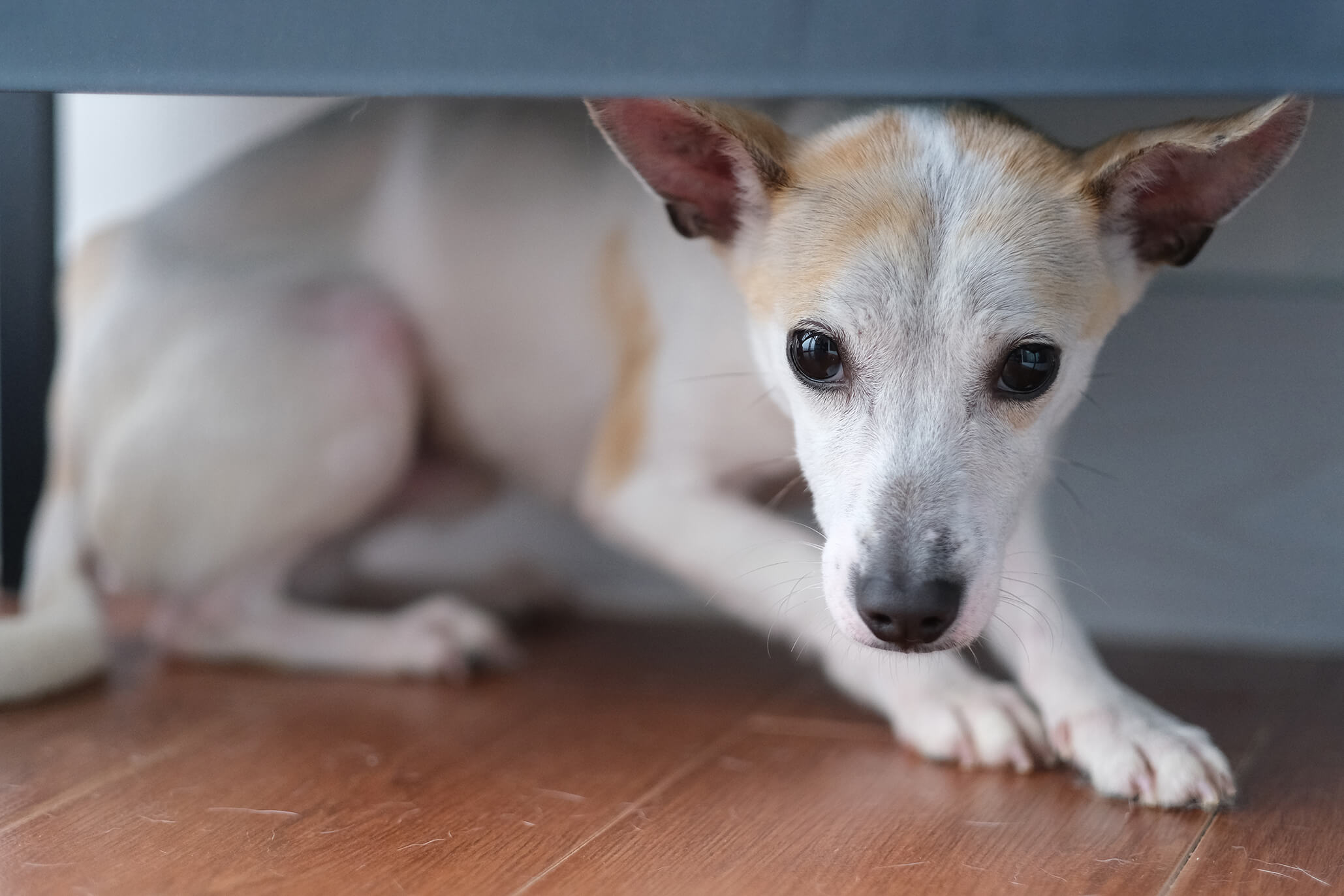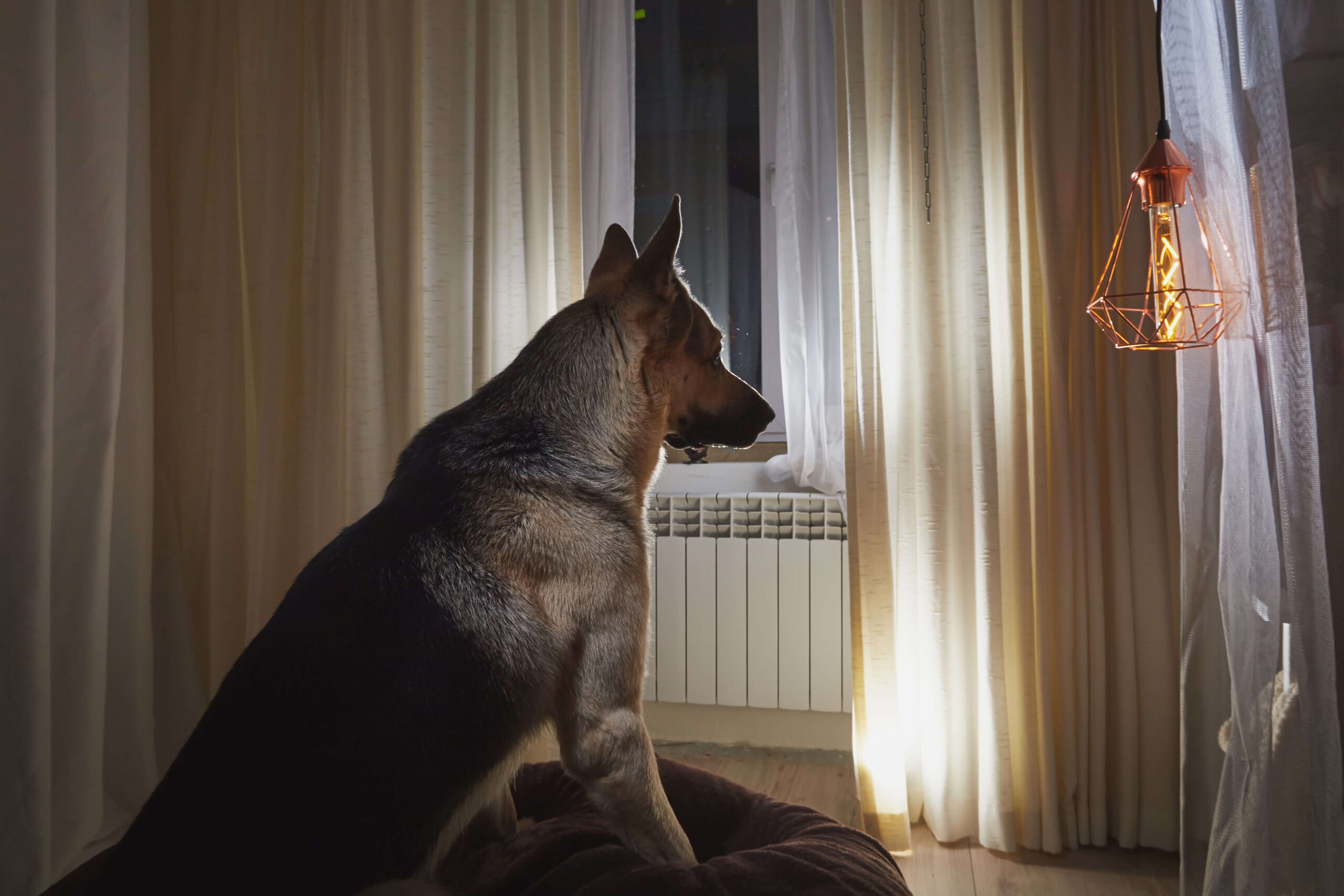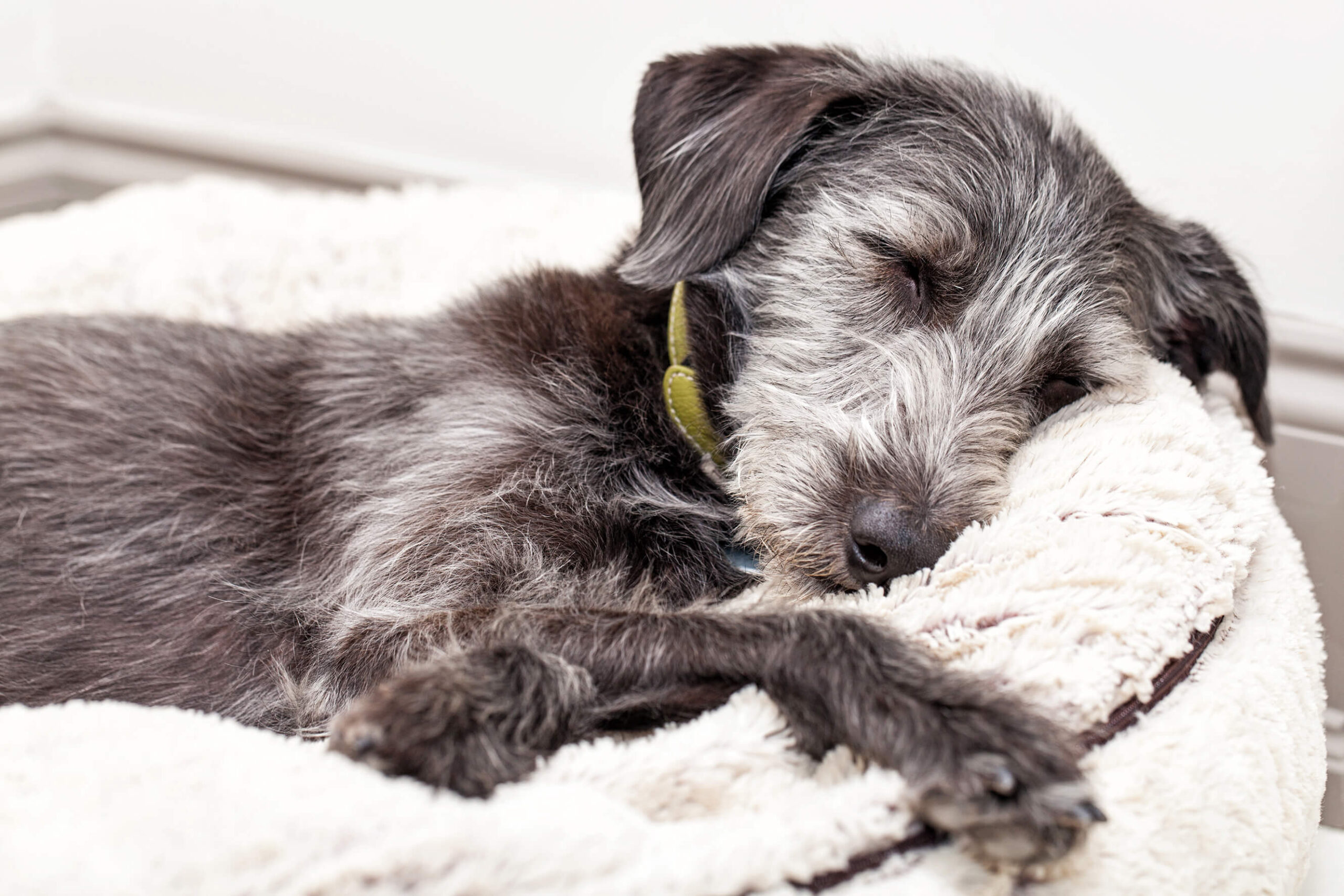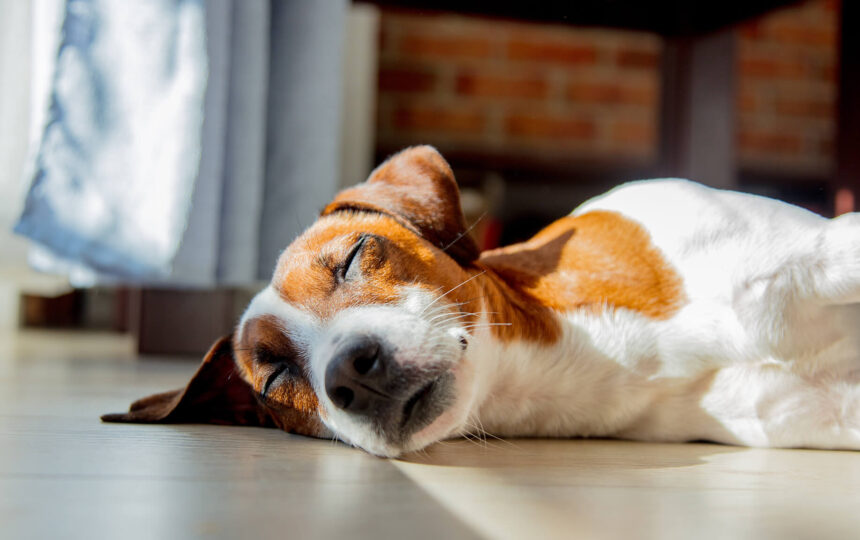You may have heard about or even tried a melatonin supplement to help regulate your sleep-wake cycle. This neurohormone, produced by the pineal gland, is instrumental in a healthy circadian rhythm in mammals, including humans and dogs.
Although commonly used for bouts of insomnia, jet lag, shift work, or other circumstances that disrupt sleep, melatonin is also a popular situational anxiety buster and behavioral modifier. It has a mild sedative and anti-anxiety effect, which calms nerves and reduces low-level anxiety resulting from stressful events.
There is plenty of research on the effectiveness of melatonin for sleep and anxiety related to sleep for humans, but what about dogs? Can anxious or sleep-deprived dogs be calmed down naturally by using a melatonin supplement?
Satisfactory evidence shows that melatonin is an excellent place to start if you have a pup who is anxious or experiencing age – or pain-related sleep issues.
How do I tell if my dog is anxious?

Dogs are pack animals. Some dogs cling tightly to the pack, while others don’t seem as needy. They feel safe and secure when in the pack – yes, even the human pack—and when the pack is separated, it causes them anxiety.
Each dog is different, and signs of anxiety can vary widely. Some dogs exhibit subtle signs, while others display more overt behaviors.
Here are some common signs that your furry friend might be anxious.
- Panting and pacing. Excessive panting, pacing back and forth, or restlessness may indicate that your pooch is anxious.
- Shaking or trembling. Dogs may tremble or shake when anxious, especially in response to specific triggers like loud noises or unfamiliar situations.
- Destructive behavior. Anxious dogs may engage in destructive behaviors such as chewing furniture, digging, or scratching excessively.
- Excessive barking or whining. Increased vocalization, such as persistent barking or whining, can indicate anxiety, especially if it occurs in response to stimuli like strangers or loud noises.
- Hiding. Some dogs may try to escape from anxiety-provoking situations by hiding under furniture or seeking out a secluded area.
- Loss of appetite. Anxiety can sometimes cause dogs to lose interest in food or to eat less than usual. This symptom is especially easy to spot if your dog is generally happy to gobble down a meal.
- Potty accidents. Dogs may have accidents indoors when feeling anxious or stressed, even if they are typically house-trained.
- Excessive licking or drooling. Anxious dogs may lick themselves excessively or drool more than usual, especially when nervous or uncomfortable.
- Excessive attention seeking. Some dogs may seek more attention from their owners when anxious, display clingy behavior, or constantly seek physical contact.
- Aggression. Anxiety can sometimes manifest as aggressive behavior, such as growling, snapping, or biting, particularly if the dog feels threatened or cornered.
Signs of insomnia in dogs

Age- or pain-related insomnia in dogs can manifest in various ways, often resembling sleep disturbances seen in older humans.
Here are some signs that may indicate age-related insomnia in dogs
- Difficulty falling asleep. It may take your pup longer than usual to settle down and fall asleep at bedtime.
- Restlessness. Dogs with insomnia may toss and turn more frequently during sleep, unable to achieve a deep, restful sleep state.
- Waking up frequently. Dogs may wake up multiple times throughout the night, disrupting their sleep cycle.
- Early morning awakening. Some dogs with insomnia may wake up earlier than usual and struggle to go back to sleep.
- Excessive daytime sleepiness. Because of disrupted nighttime sleep, your pup may appear excessively sleepy or lethargic during the day.
- Changes in activity levels. Dogs with insomnia may exhibit changes in their activity levels, becoming more restless or less energetic than usual.
- Increased irritability or changes in behavior. Lack of quality sleep can affect mood and behavior, leading to increased irritability, confusion, or disorientation.
- Accidents in the house. In severe cases of insomnia, dogs may have accidents indoors, as disrupted sleep patterns can affect bladder control.
- Changes in appetite. Insomnia can sometimes impact appetite, causing changes in eating habits or weight loss/gain.
- Vocalization at night. Some dogs vocalize (whine, bark, or howl) during the night due to discomfort or confusion caused by insomnia.
Is melatonin effective and safe for my dog?

Veterinarian Linda Aronson published a study in the Journal of the American Veterinary Medical Association, noting successful results in 80 percent of canine patients treated with melatonin. According to Aronson,
“Melatonin can turn their fears into acceptance or indifference in 10 to 15 minutes. Aronson said that melatonin is safe to use as long as necessary as there appears to be no habituation.”
According to the American Society for the Prevention of Cruelty to Animals ( ASPCA), melatonin is a safe dog supplement. It has little risk of side effects other than some possible lethargy. Just be sure to always check the supplement label and make sure that it does not contain xylitol, which can cause low blood sugar and liver injury in dogs. Many human melatonin supplements contain this ingredient—never feed your dog a supplement formulated for humans.
How to Dose Melatonin

Dr. Aronso recommends 1 milligram of melatonin for dogs under 10 pounds, 1.5 milligrams for dogs 10-25 pounds, and 3 milligrams for dogs weighing 25-100 pounds. Aronson cautions people to use plain melatonin tablets, not sublingual, capsule, or time-release forms.
Many dogs do well with melatonin in their system before a stressful event—such as fireworks, thunderstorms, or separation. Giving the hormone at least 30 minutes before gives it enough time to kick in. You can safely administer up to three doses in 24 hours, eight hours apart.
Other uses for melatonin in dogs
There is also evidence that melatonin may be helpful for the following conditions.
Cushing’s disease. Dogs with Cushing’s disease, a condition in which the adrenal glands produce excessive cortisol, may benefit from melatonin supplementation. Melatonin can help regulate cortisol levels.
Alopecia (hair loss). Melatonin has been used to treat hair loss in dogs, particularly pattern baldness or alopecia caused by hormonal imbalances.
Canine epilepsy. Some veterinarians use melatonin as an adjunctive therapy to help manage seizures in dogs with epilepsy. It may help reduce the frequency and severity of seizures.
Seasonal flank alopecia. Dogs with this condition experience hair loss due to changes in daylight and melatonin production. Supplementing melatonin can help regulate their hair growth cycle.
As with any supplement, always check with your veterinarian before giving your dog melatonin.






